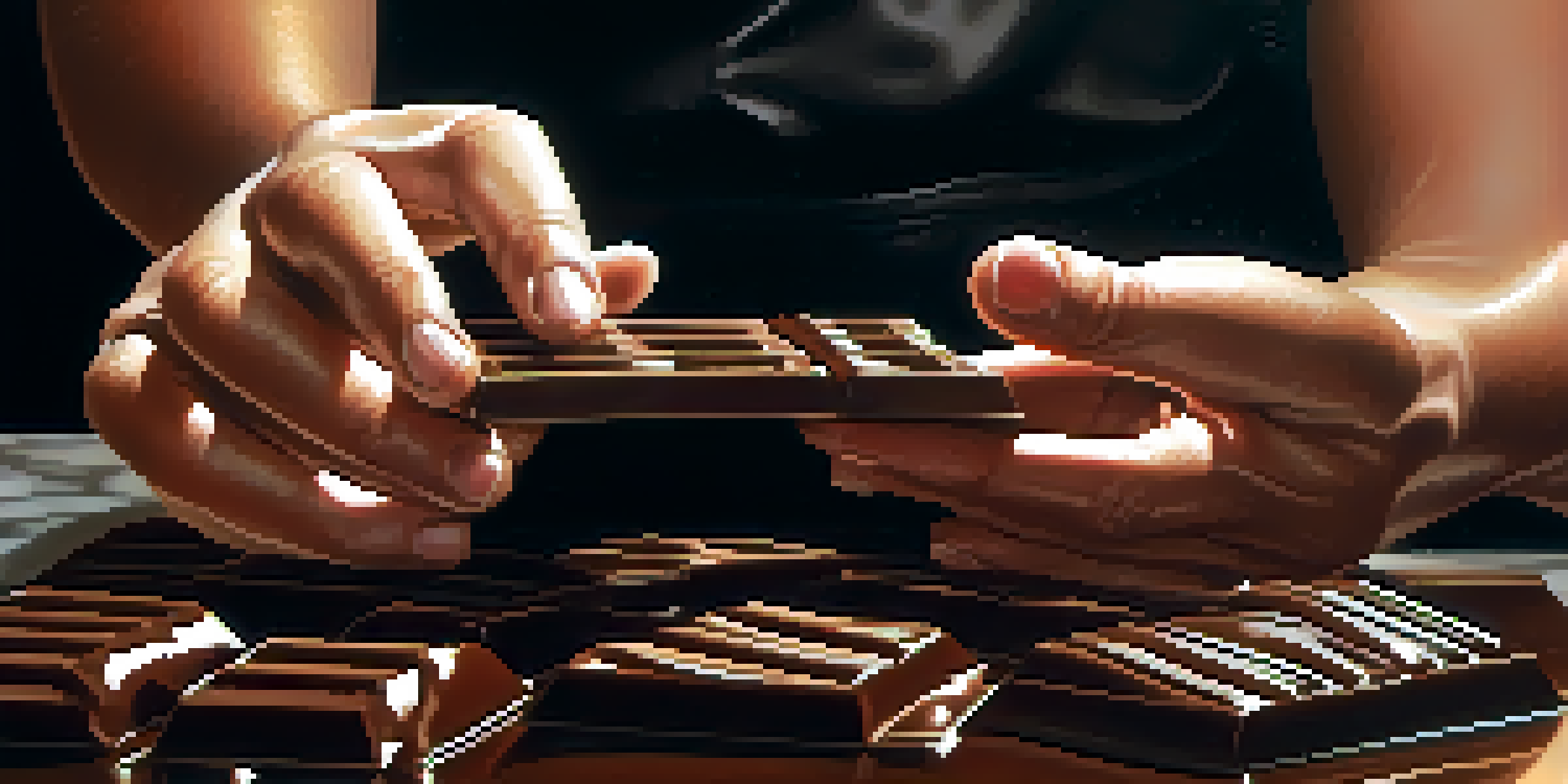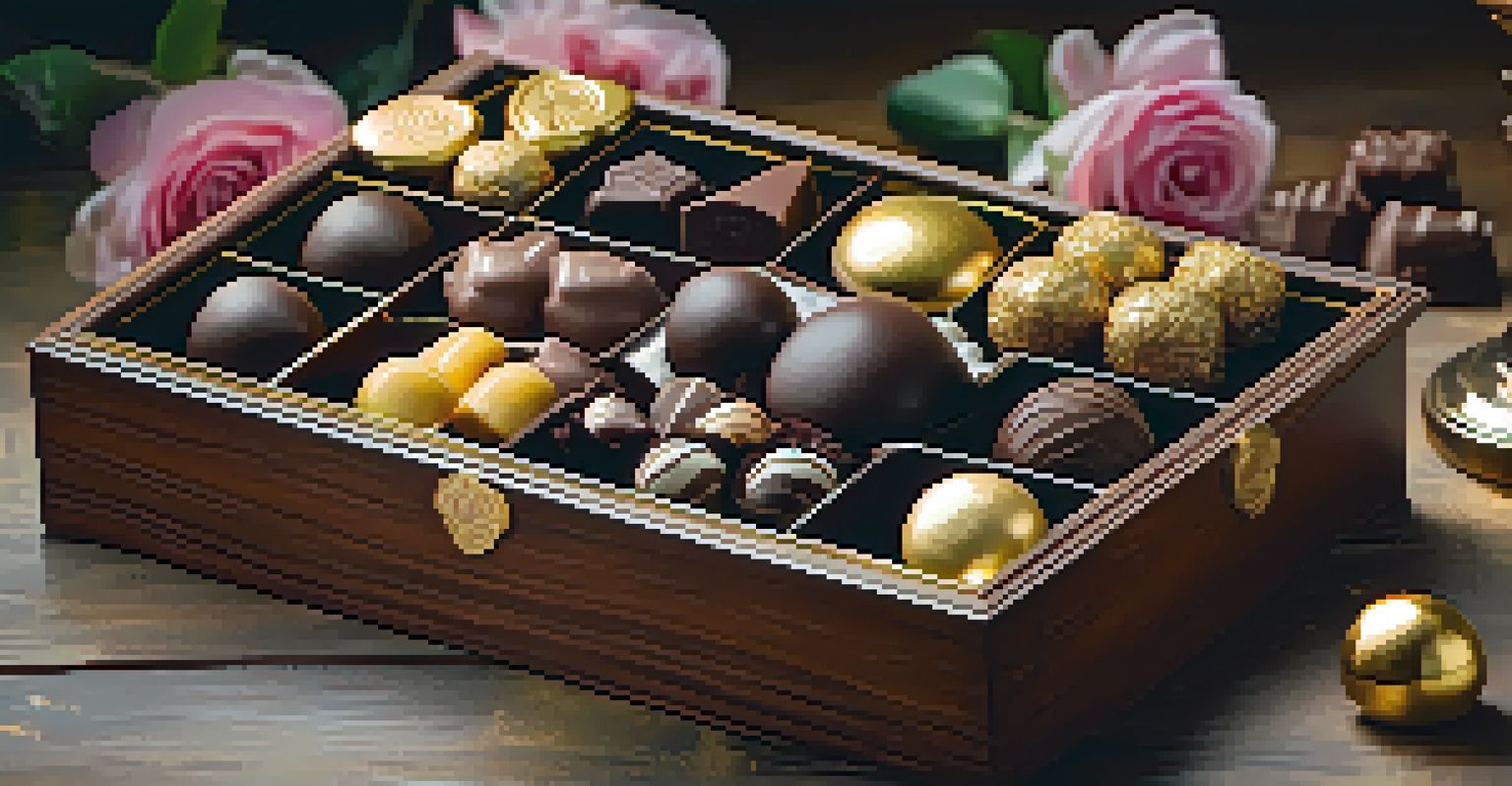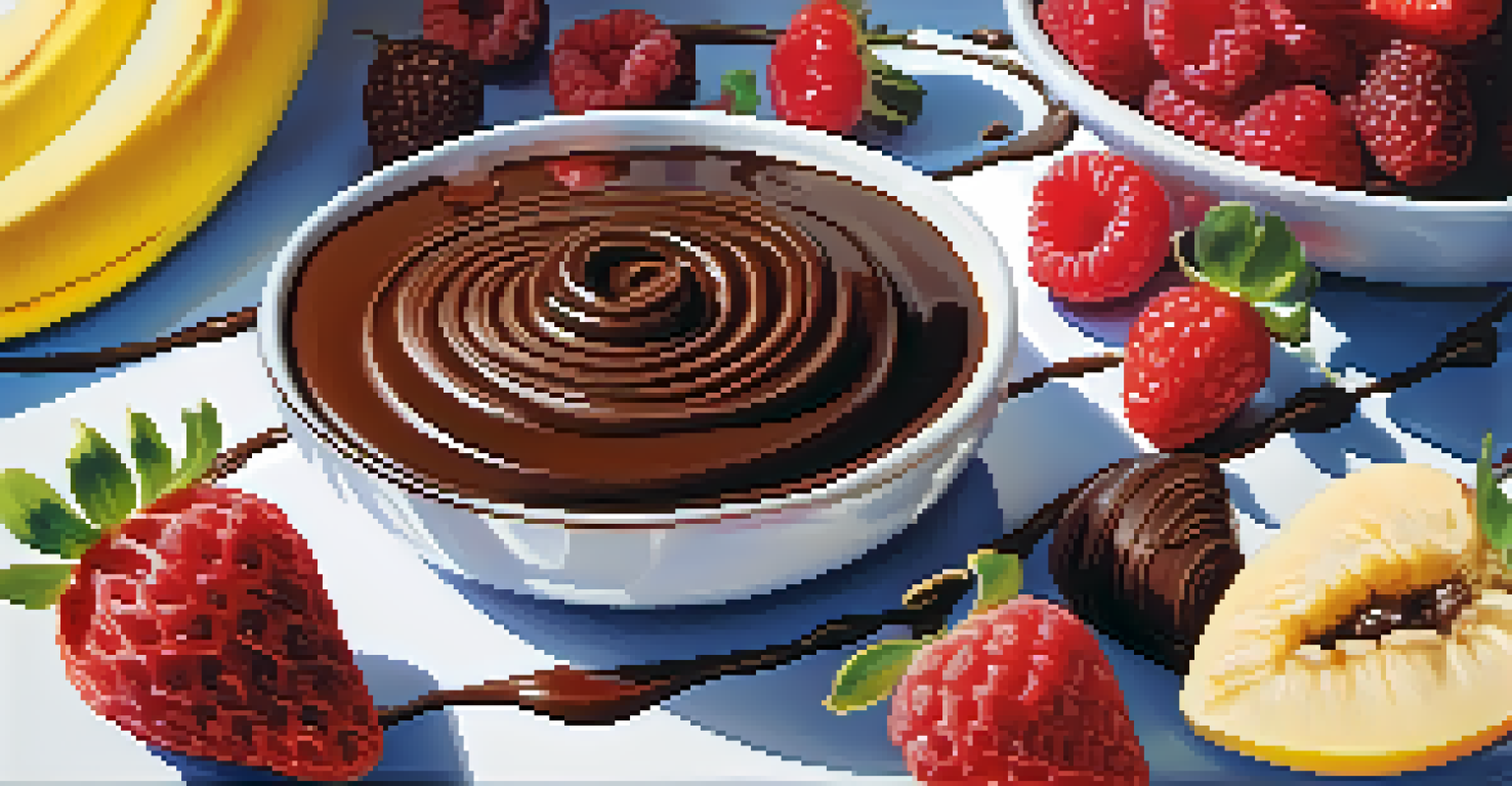The Art of Chocolate: Advanced Techniques for Gourmet Treats

Understanding the Basics of Chocolate Making
Before diving into gourmet techniques, it's essential to grasp the basics of chocolate making. Chocolate starts with cacao beans, which are fermented, dried, roasted, and then ground into a paste called chocolate liquor. This process is vital as it influences the flavor and texture of your final product, making it crucial for any chocolatier.
There is no better way to create a memory than through the taste of chocolate.
Once you have your chocolate liquor, it can be separated into cocoa solids and cocoa butter. The ratio of these ingredients will determine whether your chocolate is dark, milk, or white. Understanding these components gives you the foundation to experiment with flavors and textures in your gourmet creations.
As you progress, remember that quality matters. Investing in high-quality chocolate will elevate your treats significantly. So, always choose chocolate with a high cocoa content and minimal additives for the best results.
Tempering Chocolate: A Necessary Skill
Tempering chocolate is a crucial technique that ensures your treats have a smooth, glossy finish. This process involves heating and cooling chocolate to stabilize the cocoa butter crystals. When done correctly, tempered chocolate will snap when broken and resist melting at room temperature, making it perfect for gourmet creations.

To temper chocolate, you can use the seeding method, where you melt about two-thirds of your chocolate, then add the remaining solid chocolate to cool it down. This method is effective for achieving the right temperature and texture without specialized equipment. It requires practice, but mastering it will significantly enhance your chocolate-making skills.
Mastering Chocolate Basics
Understanding the chocolate-making process, from cacao beans to chocolate liquor, is essential for creating high-quality gourmet chocolates.
Once you've tempered your chocolate, you can use it for dipping, molding, or decorating. The beautiful shine and snap of tempered chocolate will impress anyone who tastes your gourmet treats, elevating your creations to a professional level.
Incorporating Flavors and Textures in Chocolate
Gourmet chocolate isn't just about the chocolate itself; it's also about the flavors and textures you incorporate. Start by experimenting with different flavor combinations, such as pairing chocolate with spices like chili or sea salt. These unexpected flavors can create a delightful contrast that enhances the chocolate's natural richness.
Chocolate is the answer. Who cares what the question is?
Textures play a significant role in the overall experience of your chocolate treats. Consider adding crunchy elements like nuts, crispy rice, or toffee bits to create a pleasing contrast with the smooth chocolate. Each bite should offer a surprise, making your gourmet treats memorable.
Don't shy away from using herbs and floral ingredients, like lavender or mint. These can add a sophisticated touch to your chocolate, making it truly gourmet. The key is to balance flavors while allowing the chocolate to shine through.
Using Molds for Beautiful Chocolate Shapes
Molding chocolate is an excellent way to create visually stunning gourmet treats. Using silicone molds, you can shape chocolate into various forms, from simple bars to intricate designs like flowers or animals. These molds allow for creativity and personalization, making your treats stand out.
When pouring tempered chocolate into molds, ensure they are clean and dry to avoid any unwanted textures. Gently tap the mold on the counter to remove air bubbles and ensure an even distribution. This attention to detail will give your chocolates a professional appearance.
Tempering for Perfect Finish
Tempering chocolate is crucial for achieving a smooth, glossy finish that enhances the texture and presentation of your gourmet treats.
Once the chocolate has set, carefully remove it from the mold. The result should be a glossy, perfectly shaped treat that's ready for packaging or gifting. Aesthetics play a significant role in gourmet chocolate, so take the time to perfect your molding technique.
The Art of Chocolate Decoration Techniques
Decoration is where you can truly express your creativity in chocolate making. Techniques like drizzling, painting, or airbrushing can elevate your chocolate from simple to stunning. Consider using contrasting colors of chocolate or edible gold leaf to add elegance and flair to your treats.
Using a piping bag filled with tempered chocolate allows for intricate designs on your chocolates. You can create everything from delicate lace patterns to bold swirls, adding a personal touch that reflects your style. Remember, the key is to have fun and experiment with different designs.
Another popular technique is using chocolate ganache for filling or coating. Ganache can be flavored with various ingredients, and its smooth texture makes it perfect for creating glossy finishes on truffles or cakes. Mastering decoration techniques can make your gourmet chocolates not only delicious but also visually captivating.
Creating Unique Chocolate Fillings
One of the best ways to take your gourmet chocolates to the next level is by creating unique fillings. From creamy ganaches to fruity purees, the possibilities are endless. Start with a basic ganache recipe, then experiment with flavors like citrus, coffee, or even liqueurs to find combinations that excite your palate.
Consider layering flavors in your fillings, such as a chocolate ganache with a hint of orange zest topped with a layer of raspberry puree. This technique creates a delightful explosion of flavors that will surprise and delight anyone who bites into your creations.
Creative Flavor Combinations
Experimenting with unique flavors and textures, such as spices and crunchy elements, can elevate your chocolates to gourmet status.
Don't forget about texture; a crunchy praline or a silky caramel can add depth to your filled chocolates. Playing with these elements allows you to create gourmet treats that are as intriguing to the eye as they are to the taste buds.
Storing and Presenting Your Gourmet Chocolates
Proper storage is key to maintaining the quality of your gourmet chocolates. Store them in a cool, dark place away from strong odors, as chocolate can absorb smells easily. Ideally, keep them in an airtight container to prevent them from drying out or losing their sheen.
When it comes to presentation, packaging your chocolates beautifully can enhance their appeal. Consider using elegant boxes, ribbons, or even personalized labels to make your chocolates feel special. Presentation adds value and makes them perfect for gifting or special occasions.

Lastly, remember that the experience of enjoying chocolate is just as important as the taste. Encourage your friends and family to savor each bite, allowing them to appreciate the flavors and textures you’ve crafted. A well-presented treat can create lasting memories.